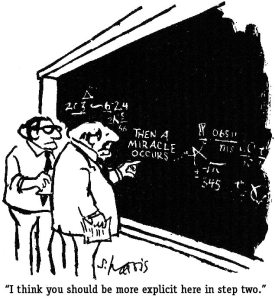Followup To: Approaching Logical Probability
Last time, we required our robot to only assign logical probability of 0 or 1 to statements where it's checked the proof. This flowed from our desire to have a robot that comes to conclusions in limited time. It's also important that this abstract definition has to take into account the pool of statements that our actual robot actually checks. However, this restriction doesn't give us a consistent way to assign numbers to unproven statements - to be consistent we have to put limits on our application of the usual rules of probability.

End of the sequence Logical Uncertainty
Previous Post: Approaching Logical Probability
The "unfortunate accident" may be that you simply didn't have enough time to apply the rule. If you have limited time, you have to stop somewhere. There doesn't have to be anything magical between steps N and N+1, it could merely mean that the timer went off at step N.
Just to expand, this example looks deceptively suspicious to humans because the proof is so obvious, even to us, and can be done in a single line using that one rule. For simple arithmetic like this, a robot would be able to prove it immediately after being asked whether 99+99=198 with hardly any time or effort. The procedure is so simple that, in practice, it would be efficient to delay generating the proof until it's asked for. Many human readers will mentally prove it while reading the sentence without even noticing that it took any work to do so. It's ... (read more)